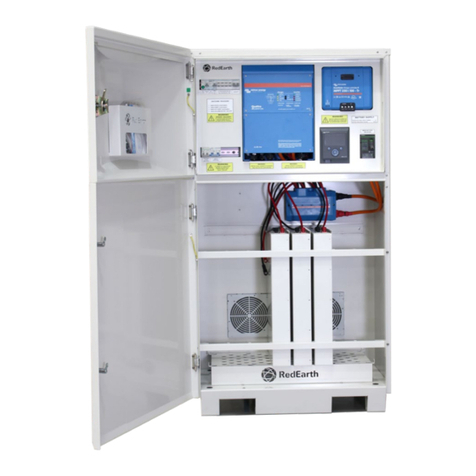
SunRise – Installation Manual
RE_PROD_0005 Version 3 Page 4 of 28 Issue Date 16/11/2020
The SunRise Home Battery is an Australian-made battery system designed to reduce electricity
usage. The system generates and stores solar power for use day & night. The SunRise is fully
certified to AS4777.2, IEC62109-1/2 & AS60950.1 and conforms to the Battery Safety Guide.
The SunRise system can be installed with or without batteries. Batteries can easily be added later,
as demand grows and budgets allow. Batteries must be of the same make and model.
•When installed with batteries excess PV solar electricity generated during the day will be
used to reduce the amount of electricity imported from the grid at night. In addition the battery
ensures essential household loads (fridges, lights etc) can be powered during a power
outage. This uses an automatic transfer switch included inside the SunRise unit.
•When installed without batteries excess PV generated during the day can be exported to the
grid, which reduces your electicity bill. Ensuring you have the best electricity plan from your
provider will improve your return.
•The SunRise system can also easily be retrofitted to an existing PV solar system.
The SunRise combines an AS4777.2 certified SunGrow 5kW inveter (SH5K-30) with the following
battery options:
Up to 6 Troppo batteries (48VDC Lithium-ion 4.1kWh nominal each).
Up to 5x PylonTech (48VDC Lithium-ion 3.55kWh nominal each – Model US3000)
NOTE: This Installation Guide should be read in conjuction with the following Sungow, PylonTech
or RedEarth Troppo Manuals supplied with the system.
A total of 6.65kW of solar panels can be connected to the systems two MPPT’s to
claim full STCs (1.33 x 5.0kW). The maximum DC string voltage is 600VDC.
The SunRise SGS system can be remotely monitored via RedEarths’ monitoring web
portal or via their their app (iSolarCloud app).
A typical installation of the SunRise will have the following steps:
•Seperation of the Main Switchboad (MSB) into essential and non-essential.
•Installation of the meter, double-pole and bypass switch in the MSB
•Connection of the essential loads
•Connection of the non-essential loads
•Connection of the PV arrays
•Optional – CAT5 internet cable (to provide more
reliable comms for remote monitoring) WiFi is
included in the system as default.
Note: The SunRise is not designed to act as the
customers main switch board (MSB) as it does not
include space for additional main & customer circuit
breakers or RCDs.





























